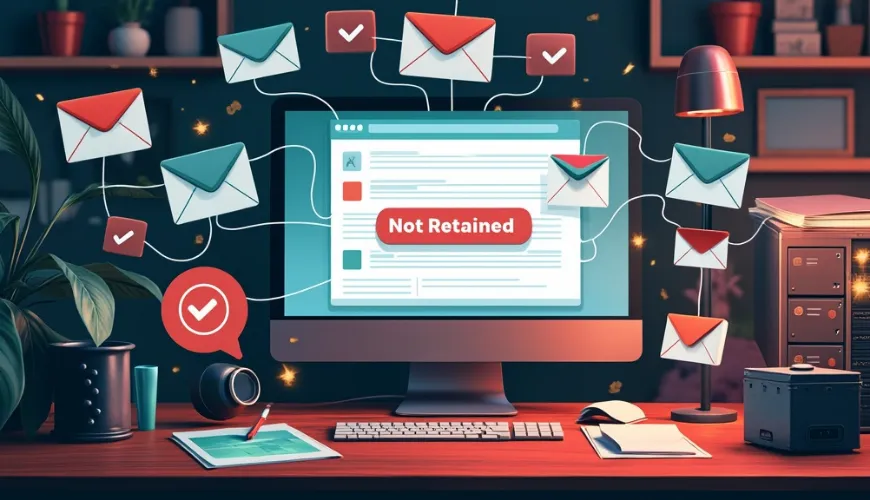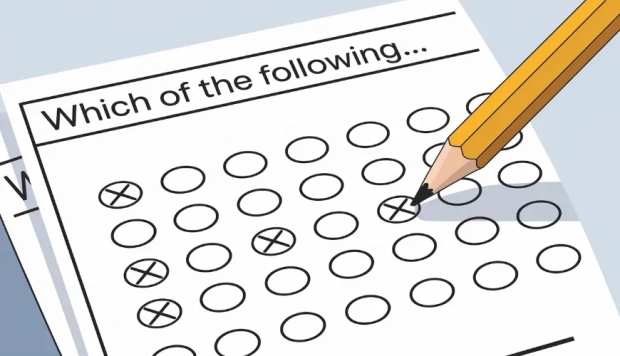What Does “Not Retained” Mean on a Job Application?

Applying for a job can feel like stepping into a black hole of ambiguity. You submit your resume, complete assessments, and maybe even interview-and then, silence. Or worse, you check your application status and see a cryptic message: “Not Retained.” For many, this phrase raises more questions than answers. What does it actually mean? Is it a definite rejection? And how should you respond?
Understanding these application status messages is key to navigating the job-seeking process effectively. Let’s unpack the real meaning behind “Not Retained,” how it appears in systems like Workday, and what steps you can take if you see it on your application.
What Does “Not Retained” Mean?
In simple terms, when your application status says “Not Retained,” it means that your submission has been reviewed, but you were not selected to move forward in the hiring process. It’s a polite rejection indicating that, for one reason or another, your application was not kept for further consideration.
This status is often used in applicant tracking systems (ATS) like Workday, which many large companies rely on to streamline recruitment. While it may sound cold or impersonal, it’s essentially a built-in label that helps hiring teams organize candidates efficiently.
But let’s dig deeper. The phrase “not retained” can carry slightly different connotations depending on the context, especially when it appears on a job application.
Breaking Down the Phrase: “Not Retained” Meaning in Context
So, what does “not retained” mean on a job application specifically? It typically implies that:
- You did not meet the qualifications the employer was looking for.
- Your profile was not selected for the next phase, such as interviews or skills testing.
- The position may have already been filled, and your application was not retained for future consideration.
In short, it’s a deferential way of saying you won’t be moving forward, but it’s not necessarily a reflection of your overall worth or potential as a candidate.
For instance, in a competitive job market, a single opening might receive hundreds of applicants. Even qualified candidates can be marked as “Not Retained” simply because someone else had a more tailored background or relevant experience.
What Does “Not Retained” Mean in Workday?
Workday, a widely-used enterprise software platform, allows companies to manage HR functions including recruitment, onboarding, and application tracking. If you’ve applied for a job at a large corporation, chances are your application went through Workday or a similar platform.
Statuses like “In Progress,” “Under Review,” and “Interview” are common, but so is the dreaded “Not Retained” status. According to Workday’s own documentation and user experiences shared on forums like Reddit and Indeed, “Not Retained” is one of several disposition statuses used to categorize applicants once a decision has been made.
Essentially, once the hiring manager or recruiter decides not to proceed with an applicant, the candidate’s status is updated to indicate the end of the line for that specific job. The system may still retain your profile for future roles, but for this particular position, you’re no longer being considered.
This is important to understand because Workday uses automated workflows to notify candidates or update their status based on recruiter actions. So when your status says “Not Retained,” it usually means a human has made a decision-not just an algorithm.
How Is “Not Retained” Different from Being Rejected?
While “Not Retained” and “Rejected” might seem interchangeable, there are subtle differences in tone and purpose.
- Rejected often implies a deliberate decision based on specific criteria, such as failing an assessment or not performing well in an interview.
- Not Retained is a broader label that may include rejections, but also applies to applicants who were simply not shortlisted due to volume or timing.
In that sense, “Not Retained” can feel less final than “Rejected.” In some cases, it might even mean your resume was never fully reviewed, especially if the posting was closed early or if internal candidates filled the role.
Which brings up an important point: seeing “Not Retained” doesn’t always mean you did something wrong. Sometimes, it’s just bad timing.
Real-World Example: A Tale of Two Applicants
Consider this scenario. Two candidates, Alex and Jamie, apply for the same marketing role at a Fortune 500 company using Workday.
- Alex has a degree in marketing, three years of experience, and strong references.
- Jamie has a decade of industry experience, a portfolio of high-profile campaigns, and specialized certifications.
Both applications are reviewed, but Jamie is selected for the interview. After a week, Alex checks their Workday status and sees “Not Retained.” Does this mean Alex is unqualified or a bad candidate? Absolutely not. It simply means that in this context, Jamie was a stronger fit based on the employer’s criteria.
It’s a tough pill to swallow, but it's a common part of the hiring landscape.
What Should You Do If You See “Not Retained”?
If your job application status says “Not Retained,” here are a few things you can do:
First of all, try not to take the rejection too personally. Hiring decisions can hinge on a variety of factors-some of which are completely out of your hands. A more qualified candidate might have popped up last minute, or internal hiring priorities may have shifted. It doesn’t always reflect your worth or potential.
Next, it's worth taking a moment to reflect on your application materials. Think about whether your resume and cover letter were specifically tailored to the job at hand. Did they highlight the most relevant skills and experience? And be honest with yourself-did you meet the key qualifications they were asking for? This kind of self-review can be a helpful way to improve future applications.
That said, one “no” shouldn’t stop your momentum. Start applying to other opportunities as soon as you’re ready. Just because one role didn’t pan out doesn’t mean the next one won’t. Many companies have several open positions at any given time, so it’s entirely possible you’re a great fit elsewhere. Keep exploring-your next opportunity might be right around the corner.
If you feel it's appropriate, consider following up with someone at the company. A polite message to a recruiter or contact can help you express continued interest or even gain valuable feedback. You never know when an extra bit of effort might keep you top of mind for future openings. Building a genuine connection can go a long way.
Lastly, make the most of the tools at your disposal. If the company uses an applicant tracking system (like Workday), take a few minutes to set up a candidate profile. That way, you’ll be in their system, and applying to future roles will be quicker and more seamless. It’s a small step that could have a big payoff.
The job market rewards persistence. A “Not Retained” status today could easily become an interview invitation tomorrow-especially if you continue to build your experience, refine your resume, and keep applying.
Other Common Application Statuses and What They Mean
The ambiguity of job application platforms can be frustrating, so it helps to know what other common statuses might mean. For instance:
If your application status says "In Progress," don't worry-this simply means your materials have been received and are still being reviewed. Hiring teams are likely sorting through a batch of candidates, so it could take some time before you hear anything back. Be patient, and maybe take this opportunity to brush up on the role or the company.
Seeing "Interview" as your status? That’s a great sign-congrats! It means you’ve made it past the initial screening, and the company wants to get to know you better. This is your time to shine and show them what makes you the right fit for the role. The opportunity is real, and it’s within reach.
If the status changes to "Offer," well, that’s the moment you've been waiting for. It means they’ve chosen you for the position and are ready to bring you on board. Hopefully, the terms align with your expectations-but even if they need some tweaking, this is a big milestone.
Now, "Under Consideration" can feel a little vague, and that’s because it is. Your application is still in the mix, and a decision hasn't been made yet. It’s not a bad sign, but it can mean you’re on a bit of a waitlist while they assess how all the candidates stack up. Stay hopeful but keep your options open.
Finally, if you see "Closed," that usually means the job listing is no longer active. Chances are, the position has been filled or the company decided not to move forward with hiring. While it’s disappointing, it’s also a signal to shift your focus elsewhere and explore new opportunities.
Understanding these terms can help you better manage your expectations and make informed decisions about where to focus your efforts.
Can a “Not Retained” Status Be Reversed?
It's rare, but not impossible. In some cases, internal processes change-a position reopens, a preferred candidate declines the offer, or additional roles become available. If your application is still accessible in the system, a recruiter might revisit it.
That’s why it’s crucial to maintain an updated profile on platforms like Workday and to remain professional in all communications. You never know when a second chance might arise.
As career coach Alison Doyle once said, “The job search is often a numbers game, but it’s also a timing game.” Being ready and visible can make the difference if an opportunity reemerges.
All in all, it’s clear that everything we've covered plays a big part in shaping the bigger picture. Whether you're just getting started or looking to fine-tune what you already know, taking these ideas seriously can really make a difference. So take a step back, reflect on what stood out, and don’t be afraid to dive deeper-one small shift can spark real change.
So, what does “Not Retained” mean on a job application? In most cases, it means your journey with that particular role has ended. But it’s not a judgment of your abilities or potential. It’s just part of the hiring process-a process that is often imperfect, fast-moving, and influenced by countless variables.
Rather than seeing “Not Retained” as a full stop, think of it as a comma in your job search. It’s a pause, not a period. Stay proactive, learn from each experience, and keep putting your best foot forward.
Because the right opportunity isn’t just about being qualified-it’s about being the right fit at the right time. And your time could be closer than you think.




